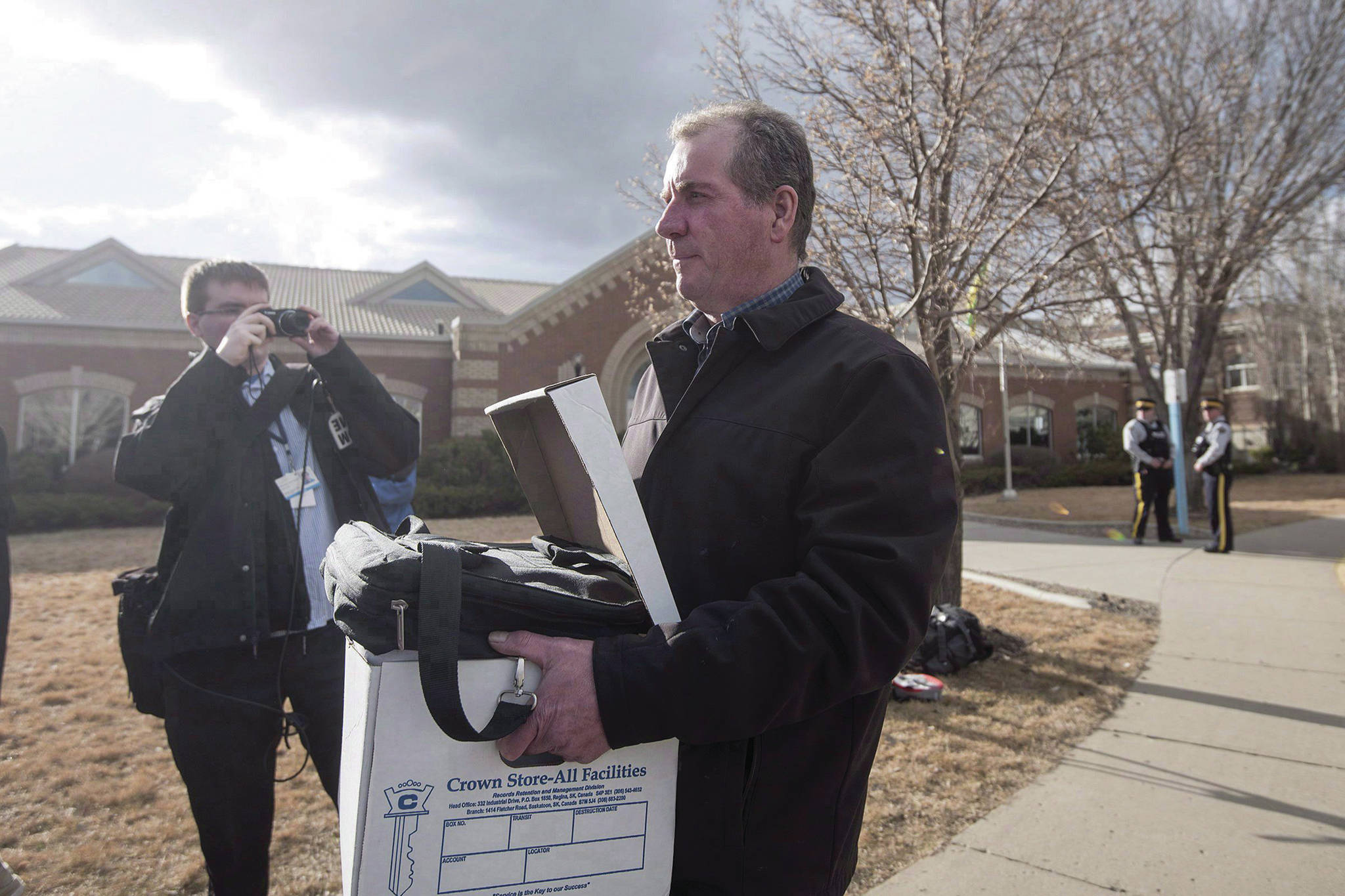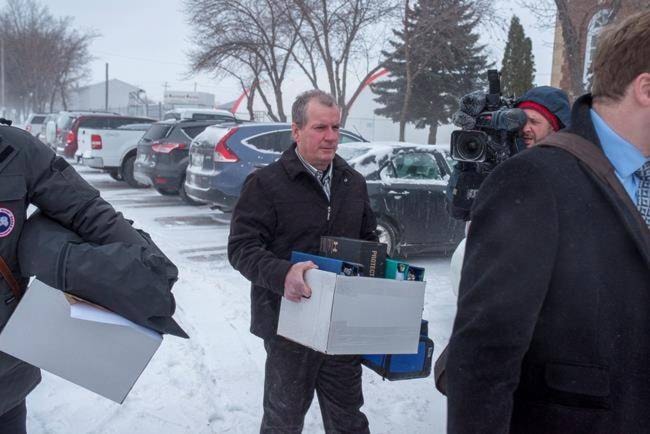BATTLEFORD, Sask. — The Crown says evidence will show that three shots were fired the night a 22-year-old Indigenous man was killed on a Saskatchewan farm although the fatal bullet has never been found.
Crown prosecutor Bill Burge told Gerald Stanley’s trial on Tuesday that court will hear from the farmer’s son, Sheldon, who was working with his father on a fence that night and came running when they thought someone was trying to steal a vehicle from their yard.
Burge told jurors they will hear Sheldon Stanley went inside to get his keys because a grey Ford Escape SUV was starting to drive away when it hit another vehicle in the yard.
“As he was running into the house, he heard two gunshots. When he got out of the house with his car keys, he heard another gunshot. He looked. He saw his father standing by the driver’s door of this vehicle with a gun and a clip in his hand,” Burge told court.
“Sheldon Stanley approached the vehicle and saw Colten Boushie in the driver’s seat slumped toward the steering wheel.”
Burge said there were two females in the back seat of the vehicle. Two other males had jumped out of the SUV and ran away.
The Crown said an autopsy found Boushie died from a gunshot wound.
“There was only one significant injury on his body and that was a gunshot wound to the head that entered behind the left ear and exited through his right neck,” said Burge.
Police recovered several firearms from the farm, including a Russian-made Tokarev TT33 semi-automatic pistol that had Boushie’s blood on the trigger, trigger guard and hammer. Stanley also tested positive for gunpowder residue.
RCMP Cpl. Terry Heroux testified officers did an exhaustive search of the farm and the SUV but the bullet that killed Boushie was not recovered.
“It’s been my experience that bullets can change when they travel through things, in this case the victim,” Heroux told court. ”Bullets can fragment. Bullets can sometimes ricochet off of different things. You might only find slivers of them.”
RCMP photos taken the night of the shooting, entered as exhibits in court, show the SUV with its front left wheel worn down to the rim, doors open and a body under blankets on the ground.
Dark blood stains can be seen on the seat and dashboard. A broken .22-calibre rifle was found next to the vehicle. Heroux said the barrel was bent but there was a bullet in the chamber and five in a magazine.
He couldn’t confirm that the rifle had been in the SUV but said there were several .22-calibre shells found inside.
Under cross-examination, Heroux said no fingerprints were found on any of the vehicles on the Stanley farm or inside the SUV. He also said police were told where the weapon used in the shooting was located, that it was stored safety and properly licensed in Stanley’s name.
Boushie, who was from the Red Pheasant First Nation, was a passenger when the SUV drove onto the farm near Biggar, Sask., on Aug. 9, 2016.
Supporters and family members of the accused and of the victim packed the courtroom Tuesday.
Boushie’s uncle, Alvin Baptiste, brought an eagle feather with him to the proceedings.
“I bring it in and this is for justice,” he said during a break. “This is a symbolic symbol of First Nations people.”
He said his sister Debbie Baptiste, who is Boushie’s mother, was at the courthouse but left the courtroom once Heroux took the stand.
“She’s not sitting in the courtroom to see those graphic pictures.”
The trial is scheduled to last three weeks.

